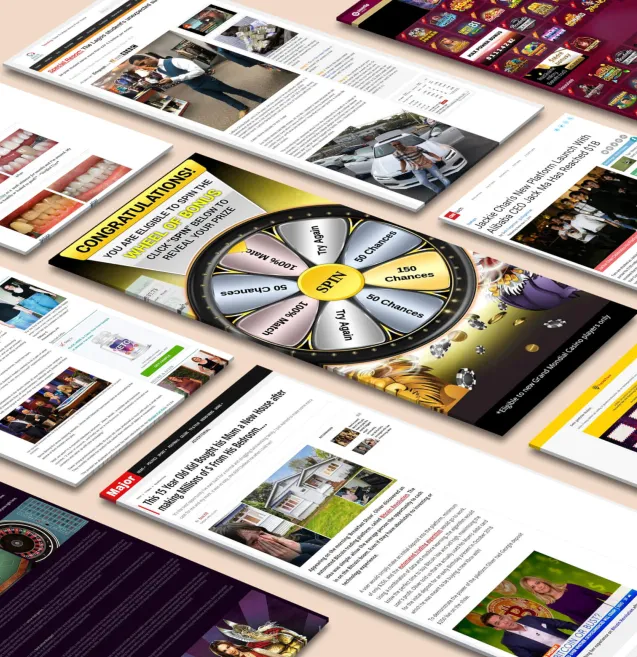
Our spy tools monitor millions of TikTok ads from over 55+ countries. Biggest TikTok Ad Library in E-commerce and Mobile Apps!
Try It FREEThe attention economy has fundamentally reshaped digital advertising, challenging the traditional belief that clicks equal success. You're operating in a landscape where served impressions no longer guarantee actual engagement, and advertisers are discovering that measuring genuine user attention provides far more valuable insights than counting clicks alone.
This shift represents a critical evolution in ad performance measurement. Research demonstrates that ads viewed for 15 seconds or more can increase brand recall by 25%, highlighting why sustained attention matters more than fleeting interactions. You need metrics that capture real engagement—not just surface-level activity.
Active time and scroll depth have emerged as powerful indicators of authentic consumer interest. These attention-based KPIs reveal whether users are truly engaging with your content or simply scrolling past it. Native campaigns, in particular, benefit from this approach because they're designed to blend seamlessly with editorial content, making traditional click-through rates less meaningful.
You'll discover how leveraging these attention metrics can transform your native advertising strategy, helping you optimize campaigns for genuine engagement rather than vanity metrics that don't drive real results.
Attention-based KPIs represent a fundamental shift from counting ad exposures to measuring genuine user engagement. Unlike traditional metrics that focus on clicks and impressions, these advanced measurements capture the quality and depth of user interactions with your advertising content.
Traditional digital advertising relies heavily on surface-level indicators:
Consumer engagement metrics paint a different picture entirely. They reveal how users actually interact with your content through sophisticated tracking methods that monitor real behavior patterns.
The rise of attention metrics in digital advertising has revolutionized how we measure success. These metrics provide a more reliable predictor of outcomes for brands by capturing genuine user engagement rather than just technical ad delivery.
Here are some key attention metrics that matter:
These ad effectiveness measurements provide superior insights because they capture actual human attention rather than technical ad delivery. Research demonstrates that ads viewed for 15 seconds or more increase brand recall by 25%, highlighting how sustained engagement drives real business outcomes.
With these attention metrics, you gain a deeper understanding of which creative elements resonate with your audience and which placements generate meaningful interactions. This data empowers you to optimize campaigns based on genuine user behavior rather than assumptions about ad visibility.
Active time measurement tracks the precise duration users spend actively engaging with your native ads, distinguishing between passive exposure and genuine attention. Unlike traditional impression counting, this metric captures when users are truly focused on your content—scrolling, reading, or interacting rather than simply having the ad present on their screen.
Native campaigns gain substantial advantages from active time measurement because these ads blend seamlessly with editorial content. When users encounter native ads that match the surrounding content format, they tend to engage more naturally and spend longer periods consuming the information. This extended engagement period becomes measurable data that reveals which creative elements, headlines, or content formats generate the deepest user engagement.
The measurement process relies on sophisticated tracking technologies:
These technologies work together to create comprehensive engagement profiles for your optimizing native campaigns. You can identify which ad placements generate sustained attention, which creative formats hold viewer interest longest, and how different audience segments interact with your native content.
The data enables precise campaign optimization by revealing the correlation between active engagement time and downstream actions like brand recall, consideration, or conversion. This granular understanding transforms how you evaluate native ad performance beyond surface-level metrics.
Scroll depth represents the percentage of content a user views as they navigate through a webpage, serving as a powerful indicator of engagement quality in native advertising campaigns. This metric reveals whether your audience merely glances at content or invests meaningful time exploring deeper sections. When users scroll beyond 50% of your native ad content, you're witnessing genuine interest rather than accidental exposure.
Native advertising particularly benefits from scroll depth analysis because these ads integrate seamlessly with editorial content. You can identify which creative elements capture attention and which sections cause users to abandon the experience. User behavior analytics show that native ads positioned at 75% scroll depth often generate higher engagement rates than above-the-fold placements, challenging traditional placement strategies.
Viewport stability measures how long content remains visible within a user's screen boundaries without scrolling activity. This metric indicates sustained attention - the holy grail of the attention economy. When your native ad maintains viewport stability for extended periods, users are actively consuming your message rather than rapidly scrolling past.
Advanced tracking technologies monitor micro-movements, pause patterns, and scroll velocity to distinguish between intentional viewing and mindless scrolling. You can leverage these insights to optimize creative length, information density, and visual hierarchy. Attention > Clicks: Designing Native for the New Attention Economy becomes achievable when you prioritize these deeper engagement signals over surface-level metrics.
Experimental design changes how you optimize native advertising by giving you organized methods to test and confirm strategies that grab attention. Unlike traditional campaign testing that looks at basic metrics, advanced A/B testing frameworks let you focus on specific factors that affect how users pay attention.
When creating experiments for your native campaigns, it's important to have clear guesses about how attention metrics will behave. Here are some ideas for what you can test:
The secret to successful campaign optimization is setting up controlled environments where you can measure attention metrics separately. This means focusing on one factor at a time while keeping everything else the same. For example, if you're testing different headlines, make sure the images, placement, and content length are all identical so that any changes in active time can be attributed solely to the headline.
In addition to traditional measurement methods, you can also use advanced experimental frameworks that include real-time attention tracking technologies. These technologies use machine learning algorithms to analyze engagement signals during live tests, allowing you to determine which variations are most effective based on sustained attention rather than immediate clicks.
To implement this approach successfully, you'll need to set up measurement systems that capture specific data points:
As you design your experiments, it's crucial to prioritize statistical significance in your attention metrics. This means running tests for a sufficient amount of time so that you can capture a wide range of user behaviors and device-specific engagement patterns that may impact the performance of your native ads.
Creative patterns for attention in native advertising require a strategic approach that goes beyond surface-level aesthetics. High-performing native ads leverage specific design elements that naturally draw and sustain viewer engagement through the entire ad experience.
Compelling storytelling forms the backbone of attention-grabbing native content. You need to structure your narrative with a clear beginning that hooks viewers within the first 2-3 seconds, followed by a middle section that builds interest, and a conclusion that drives action. Visual storytelling through sequential imagery or progressive disclosure techniques keeps users scrolling and engaged.
Bold headlines paired with supporting visuals create immediate impact. Research shows that ads with strong visual hierarchy maintain viewer attention 40% longer than cluttered designs. Your ad design strategy should prioritize:
Native ads that maintain focus throughout the viewing experience incorporate interactive elements strategically. Scroll-triggered animations, expandable content sections, and micro-interactions create multiple engagement touchpoints without disrupting the user experience.
You should design your creative with attention checkpoints - specific moments where users make conscious decisions to continue engaging. These might include compelling statistics, thought-provoking questions, or visual breaks that reset attention spans. The most effective native creatives balance information density with visual breathing room, ensuring users can process content without feeling overwhelmed.
In addition to these strategies, leveraging successful ad campaigns from platforms like TikTok can provide valuable insights. For instance, using tools like Anstrex, which allows you to spy on top TikTok ads, can help you understand what creative patterns are currently capturing viewer attention on popular social media platforms. By analyzing these high-converting TikTok ad campaigns, you can replicate their strategies to build a profitable business in native advertising.
Smart media buying decisions now rely on attention data instead of just basic metrics. You can improve your campaign performance by incorporating measurements of active time and scroll depth into your process of selecting ad placements. When you focus on choosing placements that consistently provide over 15 seconds of active viewing time, your brand recall increases by 25% compared to traditional methods that only consider impressions.
The use of attention metrics changes the way you assess publisher inventory. Instead of bidding on popular placements with uncertain engagement levels, you can now find premium spots where users show sustained attention behaviors. Publishers who provide detailed scroll depth analytics allow you to identify content environments where your native ads receive meaningful interaction.
The shift from Attention > Clicks requires you to prioritize your inventory strategically. You can achieve better ROI by:
Your media buying strategy becomes more competitive when you use viewport stability data to find ad positions that perform well. Publishers with messy page layouts consistently have lower attention metrics, making clean and focused content environments more valuable for your investment.
By using attention metrics to make decisions about your inventory, you can create sustainable campaign performance. This means reducing wasted spending on placements that don't engage viewers while directing your resources towards inventory that captures genuine user attention. As a result, you can expect to see measurable improvements in brand awareness, consideration, and conversion rates across your native advertising campaigns.
The digital ad measurement challenges overview reveals a complex landscape where traditional tracking methods are rapidly becoming obsolete. Third-party cookie deprecation has created significant gaps in cross-site user behavior tracking, making it increasingly difficult to maintain consistent attention measurement across different platforms and touchpoints. You now face the challenge of rebuilding measurement frameworks that previously relied on persistent identifiers to track user engagement patterns.
Privacy regulations like GDPR and CCPA have fundamentally altered how you can collect and process user data for attention metrics. These regulatory changes demand new approaches to measuring active time and scroll depth without compromising user privacy or violating compliance requirements. The shift requires you to balance comprehensive measurement capabilities with respect for user consent and data protection.
Privacy-compliant technologies are emerging as essential solutions for modern attention tracking:
Machine learning algorithms are adapting to work within these privacy constraints, developing new methods to infer attention patterns from limited data sets. You must now invest in technologies that can deliver actionable attention insights while operating within an increasingly restricted data environment.
The world of digital advertising is changing, and it's time to rethink how we measure the success of our campaigns. Attention > Clicks: Designing Native for the New Attention Economy isn't just a catchy phrase—it's the reality of modern advertising effectiveness.
Traditional metrics like clicks and impressions tell you what happened, but attention-based KPIs reveal why it matters. When you prioritize active time and scroll depth, you're investing in genuine consumer engagement rather than vanity metrics that don't drive real business outcomes.
The brands winning in today's attention economy understand this critical difference. They design native campaigns that capture sustained viewer focus, measure meaningful interactions, and optimize for quality engagement over quantity.
Your next steps are clear:
The attention economy rewards advertisers who respect their audience's time and attention. Start measuring what truly matters—your campaigns and your bottom line will thank you for it.
Receive top converting landing pages in your inbox every week from us.
Tips & Tricks
Year-end is the perfect time to refine your affiliate marketing approach and boost conversions. Learn five proven strategies to optimize campaigns, enhance ad performance, and take advantage of seasonal buyer intent. Discover actionable tips to maximize revenue and end the year on a high note. Perfect for affiliates ready to turn Q4 momentum into measurable success.
David Kim
7 minNov 25, 2025
Tips & Tricks
This blog reveals unexpected and creative ways to use AI for driving success in holiday marketing campaigns. It explores how AI can enhance personalization, automate ad optimization, and predict consumer trends for better performance. Readers will learn innovative tactics to boost engagement, conversions, and ROI during the festive season. Perfect for marketers looking to make their holiday campaigns smarter and more impactful.
Elena Morales
7 minNov 24, 2025
Quick Read
This blog analyzes post-Black Friday ad data to uncover key insights into evolving 2025 consumer behavior. It highlights shifting buying patterns, preferred ad formats, and the factors driving purchase decisions this season. Readers will gain valuable takeaways to refine their future campaigns based on real performance trends. Ideal for marketers seeking data-driven strategies to stay ahead in the competitive digital landscape.
Liam O’Connor
7 minNov 23, 2025




